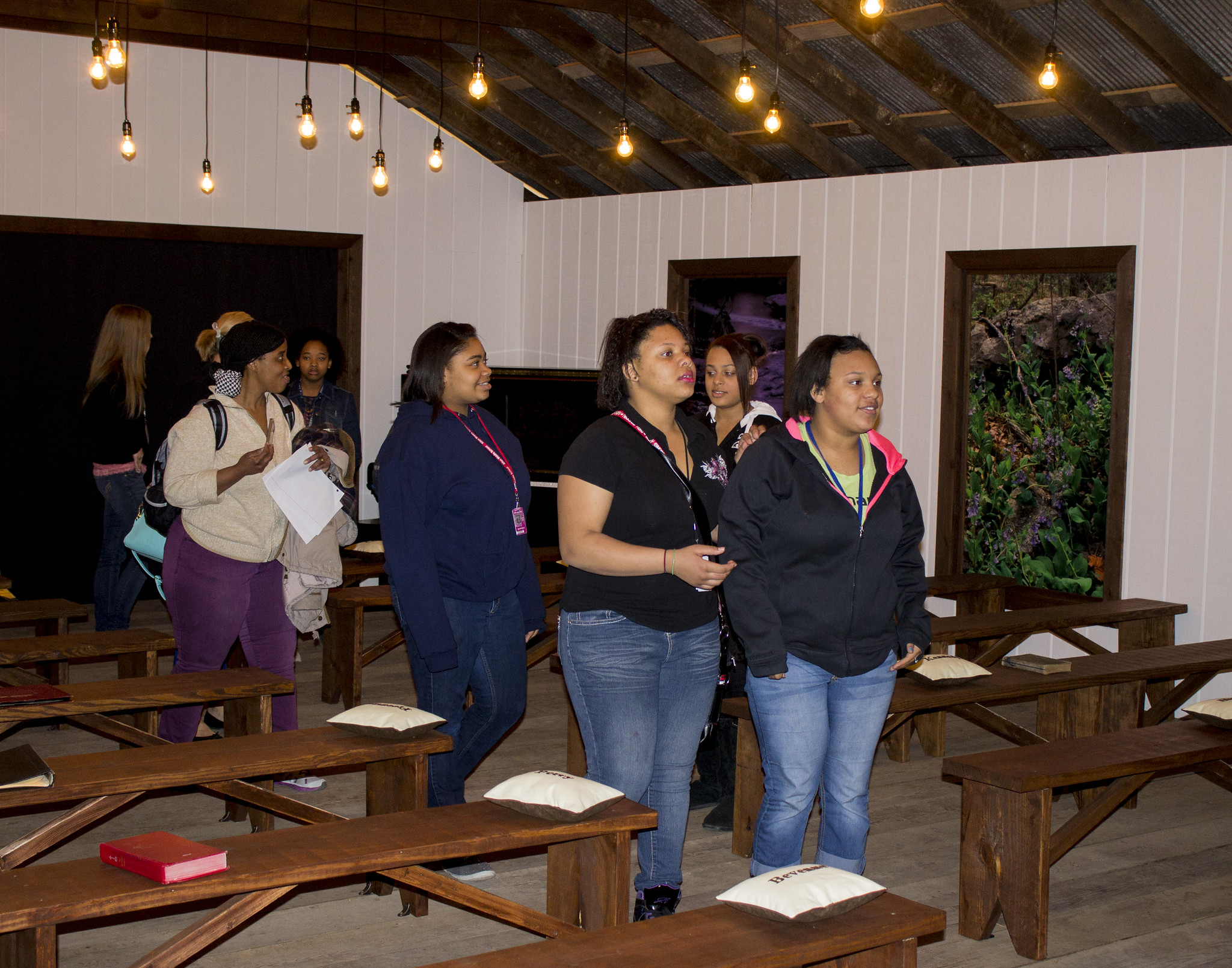Rocky Fork Exhibit
Hatheway Cultural Center Gallery
Feb. 12-March 27, 2014
Lewis and Clark Community College’s Rocky Fork Exhibit was an exciting, multimedia learning experience for both students and community members alike.
Secluded in an area of southwestern Illinois at the confluence of the Piasa Creek, the Rock Fork Creek and the Mississippi River, the Rocky Fork Community offered solace and a sense of permanence to African-American freedom seekers in the 1830s. This community grew as a network of people gathered to support each other and aid those seeking their way along the Underground Railroad.
Some came through the Underground Railroad, which has already been documented and identified in the Alton and Godfrey regions. However, the Rocky Fork community remains mostly a “secret” in the histories of slavery and abolition regionally, statewide and nationally. The current Rocky Fork area is a National Underground Railroad Network to Freedom site.
L&C’s Rocky Fork Exhibit shed light on this unique community by showcasing oral histories, the photography of L&C Faculty Member Jeff Vaughn, newspaper clippings, historical artifacts and more. The exhibit also featured an adaptation of Rocky Fork New Bethel African Methodist Episcopal (AME) Church. The AME church served as a focal point for the community and survives today.
Lewis and Clark Community College has been instrumental in bringing together community members who can trace their descendants to the 1816-1830 period of Rocky Fork history. Ongoing projects in oral history, quilt exhibitions, historical research and archaeological mapping have been initiated in the last 20 years.
The Rocky Fork Exhibit fused together historical, regional, spatial and oral concepts to provide the public with an understanding of the complexities and subtleties that existed in the region from 1816-1830. The exhibit also brought together renowned scholars on the subject to discuss freed people of color and their impact on local history.
By tracing the natural beauty of the area while exploring the genealogy and heritage of the descendants of the Rocky Fork area, the Rocky Fork Exhibit highlighted a combination of voices, imagery and historical artifacts, creating a way of exploring the history of the region while also examining the way in which that history is still present.
The Rocky Fork Exhibit was presented by the Mannie Jackson Endowment and Center for the Humanities and is a Lewis and Clark Arts and Humanities Project, with funding from the National Endowment for the Humanities and the Lewis and Clark Community College Foundation.

